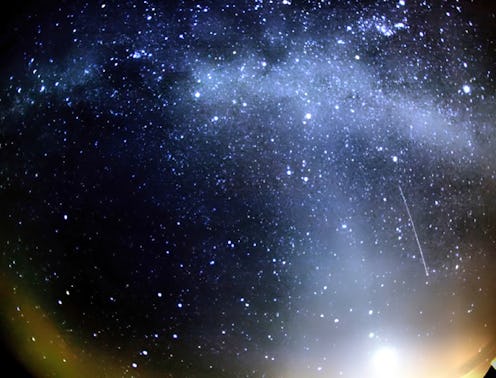Life
Look For The The Orionids Meteor Shower In The Sky

Prepare yourself, #skylovers, for some prime stargazing. The Orionids meteor shower peaks Thursday and Friday, Oct. 20 through 21 — and if conditions are right, it will truly be a sight to behold. Stargazers will want to set their alarms for the best view of the show, because the optimal time to view The Orionids is right before dawn. If for some crazy reason you miss it (like sleep, for example), don't sweat it! The bright flashes of light will continue to streak across the night sky through Nov. 7.
According to Space, this year there is expected to be approximately 20 meteors per hour during the shower, however bright moonlight may cut that number down to around 15 visible meteors per hour. This number varies, with upwards of 70 or 80 meteors being spotted every hour some years (how could i possibly miss that???). This annual meteor shower lighting up the sky every October is a result of the trail of meteoroids left by Halley's Comet (Comet 1P/Halley). While you may only get to see the famous comet once in your lifetime, the Earth's orbit intersects with its icy debris around this time every year, the friction caused by our atmosphere producing the celestial light show.
The Orionids are named after the bright winter constellation Orion the Hunter, from where they appear to originate. The meteors' point of origin will be near Orion's sword, close to the red star Betelgeuse.
While you may be tempted to stare straight at Orion's easy-to-spot belt, Bill Cooke, a NASA meteor expert told Space that he recommends against it, "because meteors close to the radiant have short trails and are harder to see — so you want to look away from Orion." Instead, Cooke recommends laying flat on your back and taking it all in... preferably far away from the light pollution of a city.
There is nothing more romantic than snuggling up in a blanket in the quiet of the early dawn, and making a wish on a shooting star. Just be sure to get your caffeine fix before attempting to climb up on the roof.
Images: Brocken Inaglory/Wikimedia, Uranometria/Orion